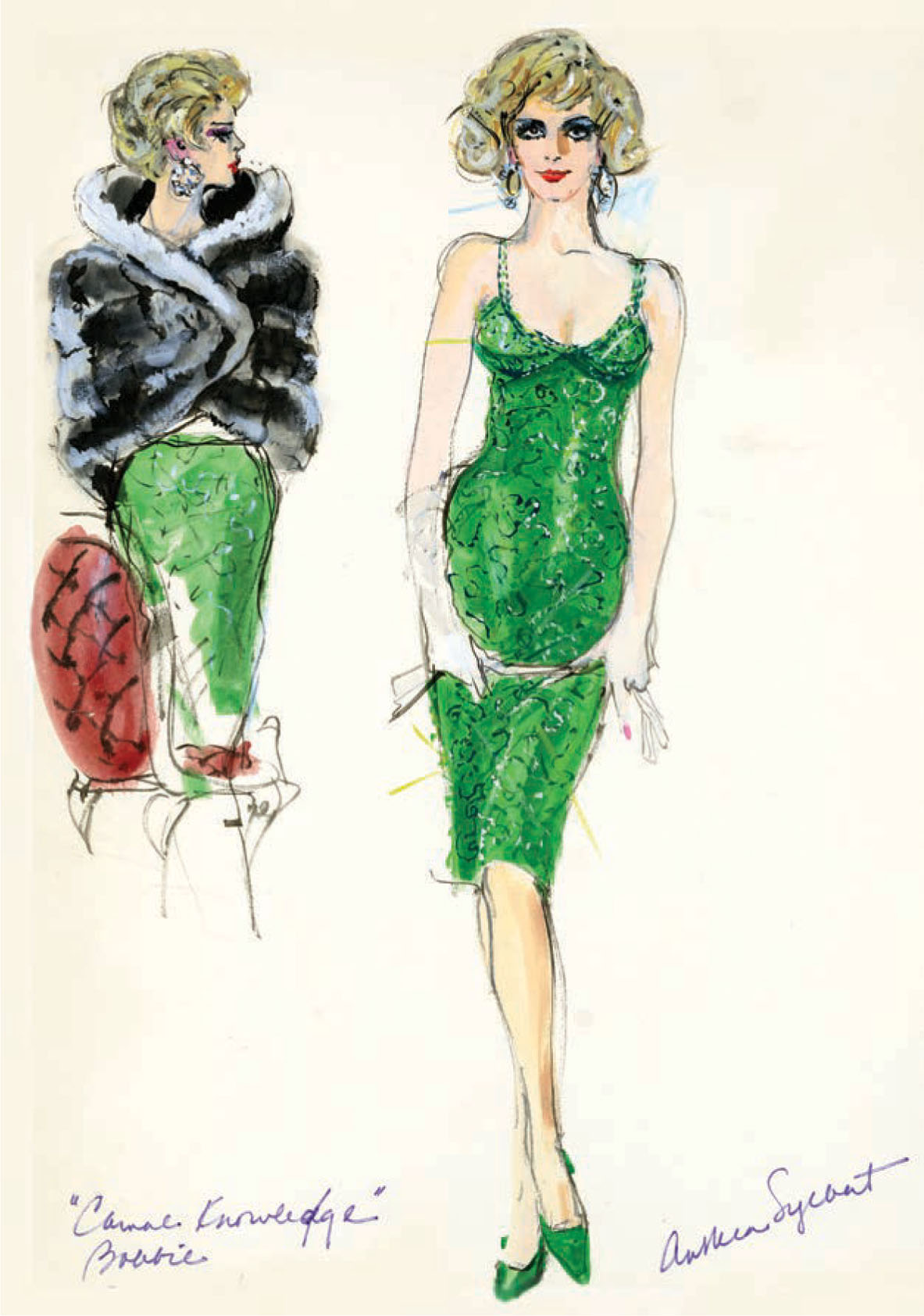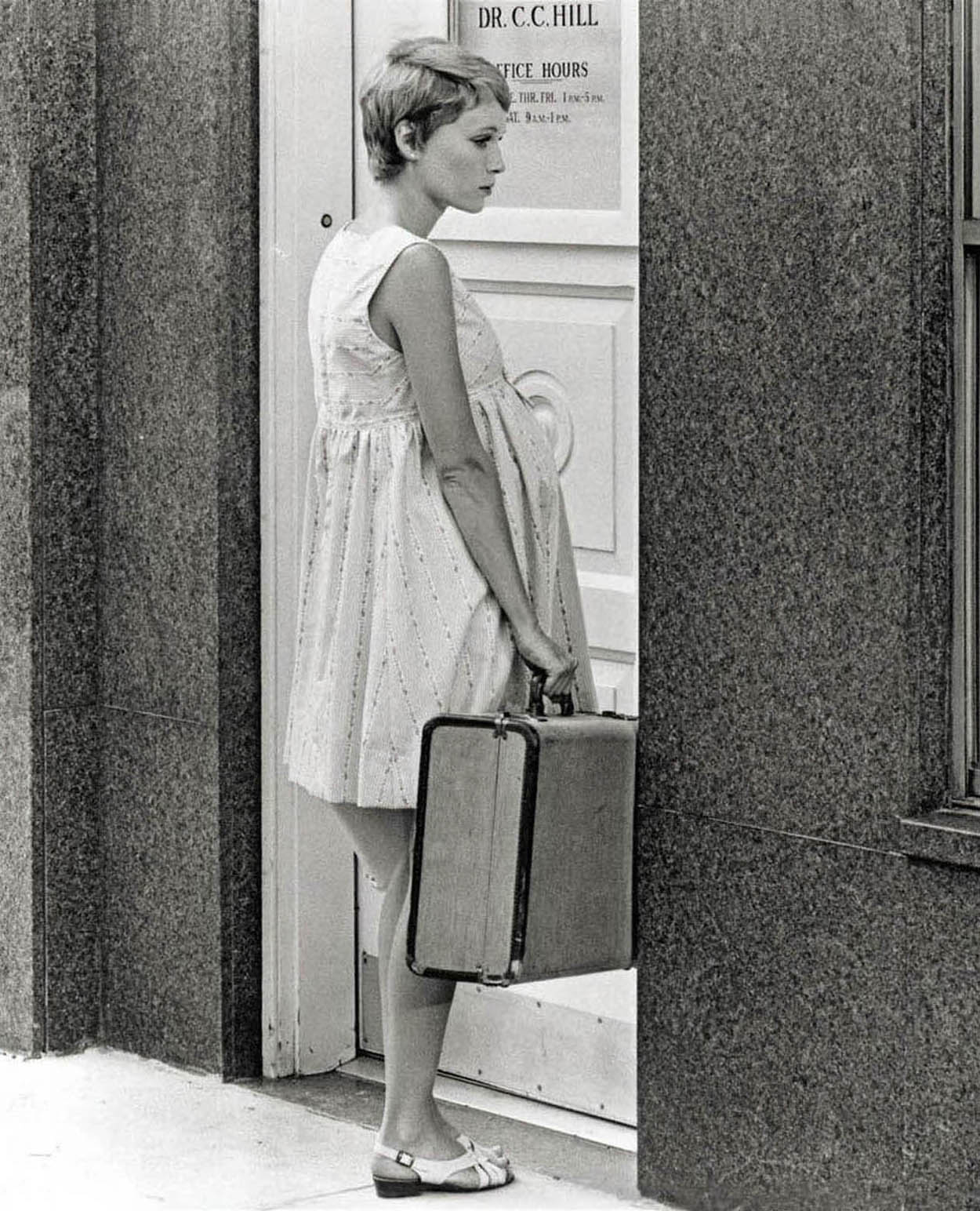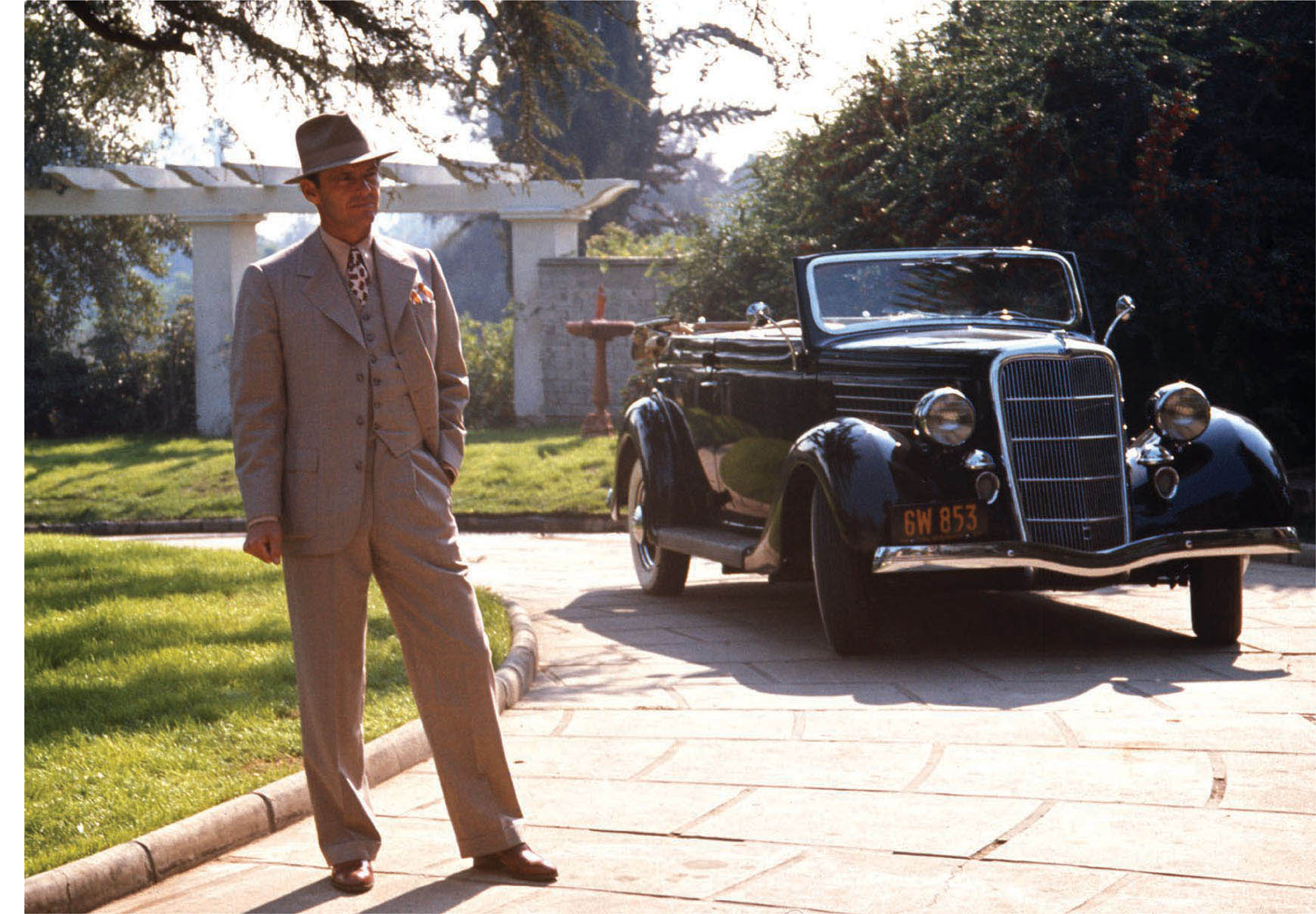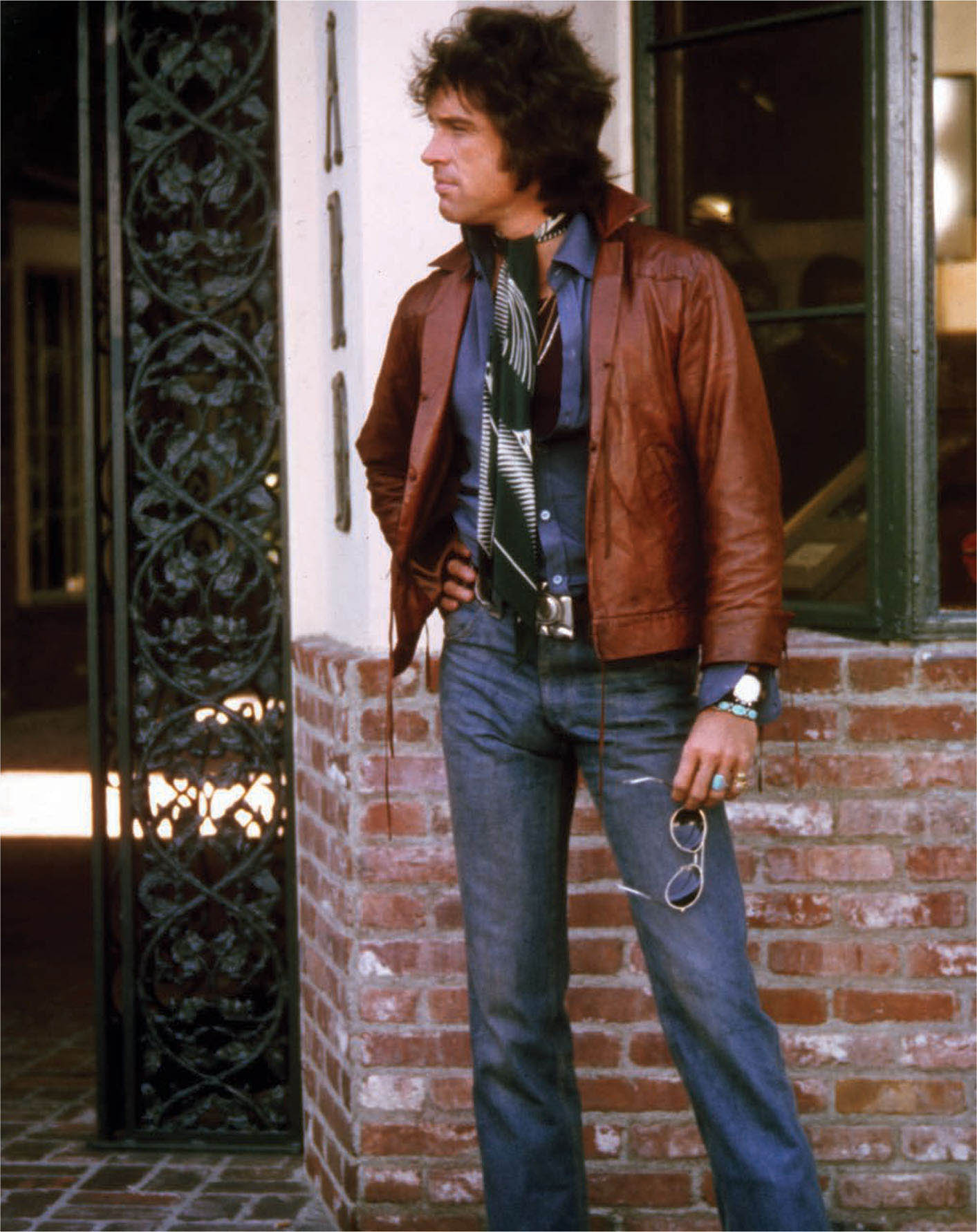Anthea Sylbert was born on October 6, 1939, in New York City. She studied art history at Barnard College, but decided not to go for a master’s degree when she was hired to do research for a Broadway costume designer. “It occurred to me that this might be more interesting than twelfth-century manuscripts,” Sylbert said.
Sylbert began designing for off-Broadway theater productions, earning extra money designing shoes for Capezio. She was hired to design the 1967 film The Tiger Makes Out “because none of the successful Broadway designers would deign do such a small film,” Sylbert said. There she met future husband Paul Sylbert, who was working as a production designer on the film. Through her brother-in-law, production designer Richard Sylbert, she met director Roman Polanski. Polanski was working on his first big Hollywood feature, Rosemary’s Baby (1968), and hired Sylbert to design. Sylbert put star Mia Farrow in Peter Pan collars and baby-doll dresses. Because the film was set in 1965, the year that skirt lengths grew shorter every month, Farrow’s dresses grow shorter as the film progresses.
For Chinatown (1974), Polanski wanted to dry out the color scheme, as the need for water was integral to the plot. Sylbert stuck to brown, black, and cream tones for Nicholson and Dunaway. “Jack Nicholson is the easiest to dress—not from the way he’s built—but he’s extremely open and free about trying anything. I liked working with Faye [Dunaway] because she’s such an extreme fusspot and a challenge. I’ve always thought she has been overdressed in her movies. My feeling was that she’s always about to show you her lining. Convincing her was extremely satisfying. Her way of describing my clothes is that they’re ‘clothes without any ego.’”
When designing for Warren Beatty in Shampoo (1975), Sylbert had to reach back to the night of and morning after the 1968 presidential election. “Men did, in fact, open their shirts down to the navel and hang seven thousand things around their necks, started to become peacocks, started in a funny way to become a sex object,” Sylbert said. “So you say, ‘okay, if I’m going to put him in a leather jacket, when you touch it, it should almost be a sexual experience.’” When Sylbert designed the jacket, she put zippers on it. She started to make it and realized zippers are not really sexy. “We laced the jacket, had fringes hanging, so there was movement when he wore it,” she said. “Even the jeans—we started off by just buying jeans; after all, jeans are jeans. Well, you couldn’t see his body well enough, so we custom-made the jeans. His shirts were silk: everything he wore had some kind of sexuality to it.”

Anthea Sylbert’s sketch for Ann-Margret in Carnal Knowledge (1971).

Mia Farrow in Rosemary’s Baby (1968).

Jack Nicholson in Chinatown (1974).
In 1974, Robert Towne, who had written the script for Chinatown, tried to persuade Sylbert to become a film producer. At the time, Sylbert seemed disinterested. “If I were a producer,” Sylbert said, “I’d have to cut my own budget and I don’t know if that would work out.” After a fight over the costumes on F.I.S.T. (1978), Sylbert decided to take the plunge into producing. John Calley at Warner Bros. offered Sylbert a job as vice president in charge of special projects in 1977. In 1980, she became vice president of production for United Artists, working on Still of the Night (1982) and Yentl (1983). In the mid-1980s, Sylbert formed a production company with Goldie Hawn and produced Protocol (1984), Overboard (1987), and My Blue Heaven (1990), among others. In 1995, she dissolved her partnership with Hawn. She is married to actor Richard Romanus.

Warren Beatty in Shampoo (1975).